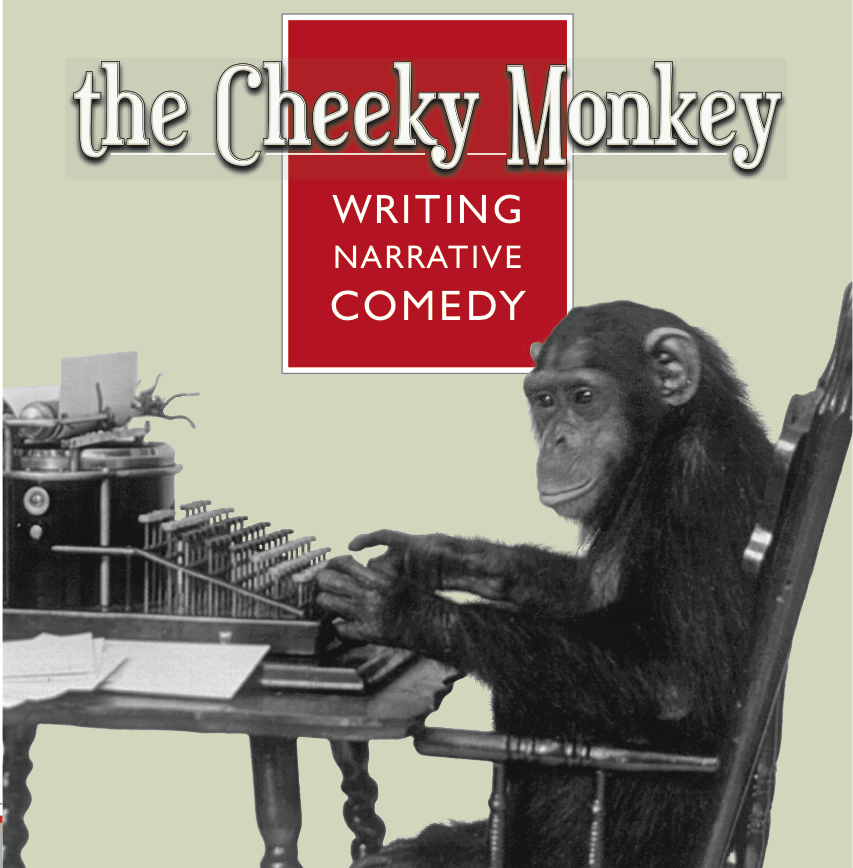THE NATURE OF LAUGHTER
Everyone laughs, even Methodists. Though the trigger may vary, it’s a behaviour shared by virtually all human beings. The ability to laugh is deeply ingrained in our psychological make-up. For all we know, it has been with us since caves had en-suites.
Scientists, biologists and psychologists have put forward countless theories on the origins, causes and effects of human laughter. But getting a laugh is a science only comedians and comedy writers must master.
Laughter has several mysterious qualities. Like blushing, adrenalin rushes and erections, laughter is involuntary. We’ve all had the giggles at inappropriate times. In fact, the greater the threat of reprisal, the more we giggle. Furthermore, we can’t decide to be amused. We might expect to laugh at a stand-up comedian, but that doesn’t mean we will. Neither can we delay a laugh until we’re ready—as anyone who’s snorted beer out their nostrils will attest.
By the same token, we can’t convince ourselves something is funny any more than we can make ourselves believe someone is sexy—unless we’re drunk, and even then it doesn’t always work.
Few jokes can make us laugh twice. Yet if we do find one, it’s likely to keep us laughing for the rest of our lives, whenever we think of it.
Laughter stimulates the release of endorphins—peptide hormones with properties similar to morphine—that can lower stress levels, increase stamina and act as painkillers. A small amount of adrenaline may also be released during laughter. These are chemicals one might associate with fighting or fleeing rather than sitting and watching comedy or dining with funny friends. The descriptors for laughter and comedy also tend towards the violent. Audience members speak of comic material that is ‘close to the bone’, ‘painful to watch’ or ‘so very wrong’. A comedian who has a bad show might say ‘I died’, but if the show went well they’ll say ‘I killed ’em’, ‘It was slaughter’ or ‘There was blood on the floor’. A comedy audience member who’s had a good time might say ‘I cried’, ‘I couldn’t breathe’ or ‘I pissed myself’. Unless you’re into sadomasochism, none of the above sound like entertainment.
So what’s going on? If we have no control over when we laugh, what we laugh at and how our bodies respond to excessive laughing, then why do we seek it out?
The perspective on laughter that I have found most useful as a writer is one I like to formalise as the ‘Underlying Primal Response’ theory. It may be simplistic (or even completely wrong) but it works for me.
The theory describes how the key elements of humour, namely surprise and human vulnerability, generate laughter. In essence, laughter is a response to danger averted, avoided or denied.
According to the UPR theory, laughter is a primitive response to simulated danger—danger to our social status, our equilibrium or our physical survival. When we hear an embarrassing joke or a surprising punchline, only the nub of the information is understood by our primitive flight-or-fight brain. A joke that makes an unexpected connection between two otherwise unrelated things registers in the primate brain simply as ‘Surprise!’ in the same way that it might register a tiger’s camouflage in a bamboo jungle. Though our higher brain knows the difference between real and simulated danger, the primal brain is not geared to take chances. It initiates basic fear-and-flight responses such as making noises of alarm, releasing adrenalin and endorphins and bladder evacuation. Our conscious mind diverts this response to the laughter mechanism. As American comedian Bob Newhart says, ‘Laughter gives us distance. It allows us to step back from an event, deal with it, and then move on’. We rarely laugh at the same thing twice because, having learned, we’re less susceptible to surprise a second time. If we laugh repeatedly at the same thing, it’s because it remains a consistent (if only notional) threat to our equilibrium.
The reason the fight-or-flight response is diverted to the laughter mechanism rather than simply suppressed is that laughter is also a social tool, helping people bond and find affinity with one another. The presence of others makes us socially vulnerable, and this may explain why we tend to laugh more when others are around. It’s no accident that many sitcoms fake the group-laughter experience by using ‘canned’ or live-audience laughter on their soundtracks. Producers know that adding a laugh track both highlights the show’s humour to the viewing public and boosts the laughs the show generates. Decades of broadcasting have yet to prove them wrong.
Live comedy audiences also enjoy laughing together. A sense of togetherness evolves as our private fears and weaknesses are dragged into public view. We are united by our shared vulnerability. When a comedian singles out an individual audience member for ridicule, the rest of the audience laughs, partly from relief that it’s not them (although they know they remain in danger) and partly from an affinity with the victim’s pain.
The victim is usually blushing and helpless with laughter. They laugh hardest when they interpret the laughter around them as essentially benign: audience identification proves that they have survived the social danger and are still part of the group. Sometimes, however, people interpret this laughter as unfriendly. That is, they feel the audience is laughing at them because there is something genuinely different about them. This may be why comedians tend not to pick on, say, disabled people, as this can too easily be construed as the humour of exclusion rather than inclusion.
Comedians like to pick on people who’ve chosen the limelight, such as celebrities or politicians, because this makes them fair game. And if an audience member provokes an exchange with a comedian by heckling, they have singled themselves out and must cop whatever comes to them.
Laughter can also signal to others that an apparently threatening situation is actually okay, as when we witness someone falling over. If they sit up and laugh, this immediately signals that they are unhurt. Likewise, to an observer, someone being tickled could look like an attack. It’s only the laughter that tells us it’s actually enjoyable.
Even the act of smiling bears similarities to the fight-or-flight response. Sure, good teeth are a sign of healthy breeding stock but the other signal conveyed by bared teeth is, ‘Stay back or I’ll bite’. In both smiling and expressing fear, lips are stretched wide, teeth are bared and eyebrows are raised. A frightened face is all teeth and eyeballs, a smile without joy. To most of us an easy smile suggests a positive personality. This may be because we feel a smiling person is one whose insecurities are on display, and that therefore they’re an honest, open person we can trust.
To own a copy or e-book of ‘The Cheeky Monkey’ CLICK HERE


